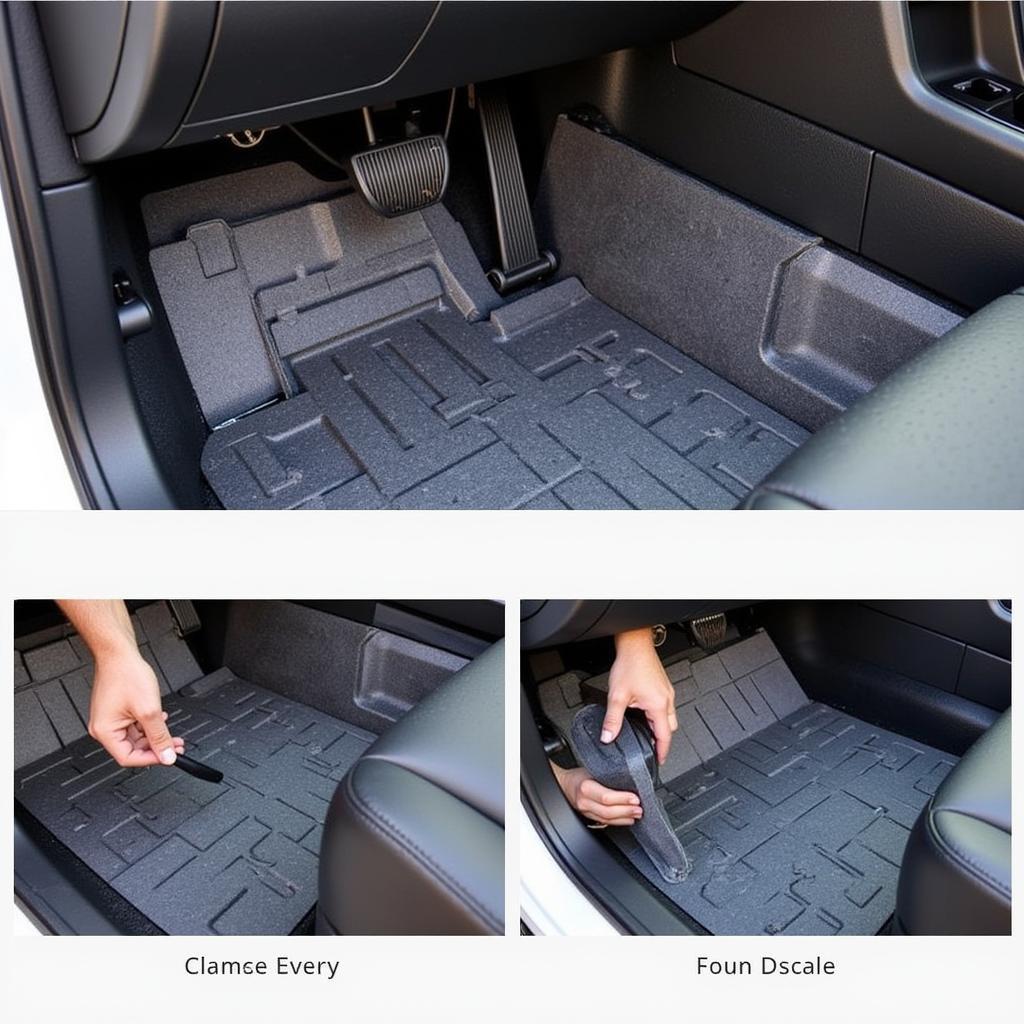Road noise can make any drive unpleasant, from a short commute to a long road trip. Understanding How To Fix Road Noise In Car is crucial for a comfortable driving experience. This article will delve into the common causes of road noise and provide practical solutions to help you reclaim the peace and quiet in your vehicle. Let’s get started!
Identifying the Source of Road Noise
Before you can fix road noise in car, you need to pinpoint where it’s coming from. Common culprits include tires, worn suspension components, and gaps in the car’s insulation. Is the noise a low rumble, a high-pitched whine, or a rhythmic thump? Paying attention to the type and frequency of the noise will give you clues to its origin. For example, a rhythmic thumping could indicate a problem with your tires or suspension, while a constant drone might suggest tire noise or a lack of sound insulation. If your car squeaks, you may need to fix squeaky car.
Tires: The Usual Suspects
Tires are often the biggest contributors to road noise. The type of tire, its tread pattern, and its condition all play a role. Worn tires, especially, can significantly amplify road noise.
Suspension: More Than Just a Smooth Ride
A worn suspension system can allow more vibration and noise to transfer into the cabin. Worn bushings, ball joints, and shocks can all contribute to increased road noise. Learning how to fix a ball joint on a car can be invaluable.
Insulation: Your Car’s Sound Barrier
The amount and quality of insulation in your car play a significant role in how much road noise enters the cabin. Older cars, or those with less insulation, tend to be noisier.
 Installing Sound Deadening Material in Car Floor
Installing Sound Deadening Material in Car Floor
How to Fix Road Noise in Your Car
Now that you’ve identified the potential sources, let’s explore how to fix road noise in car.
Tire Selection and Maintenance
- Choose quieter tires: Opt for tires specifically designed for a quiet ride. These tires often feature noise-reducing tread patterns and specialized rubber compounds.
- Maintain proper tire pressure: Correct tire pressure ensures optimal performance and minimizes noise.
- Rotate and replace tires regularly: Regular rotation promotes even wear, while timely replacement prevents excessive noise from worn tires.
Suspension System Check-up
- Inspect and replace worn components: Have a mechanic inspect your suspension system and replace any worn bushings, ball joints, or shocks. This will not only reduce noise but also improve handling and safety.
Enhancing Sound Insulation
- Add sound deadening mats: These mats, applied to the floor, doors, and trunk, can significantly absorb vibrations and reduce noise transmission.
- Use sound-absorbing foam: Applying foam within panels and cavities can further dampen noise.
- Install thicker carpeting: Upgrading to thicker carpeting can help absorb some of the road noise entering the cabin. If your car’s electrical system is giving you trouble, knowing how to fix electric window in car can be very helpful.
“Addressing road noise is often a multi-pronged approach. Rarely is there one single magic bullet,” says Dean Whinster, a veteran automotive engineer. “It’s about addressing tires, suspension, and insulation in a holistic manner.”
Conclusion
Fixing road noise in car involves a combination of choosing the right tires, maintaining your suspension, and enhancing your car’s insulation. By implementing these strategies, you can significantly reduce road noise and enjoy a much more peaceful and comfortable driving experience. If you need help with your car starter, you can find information on how to car starter broken how to fix. Connect with AutoTipPro for expert assistance. Call us at +1 (641) 206-8880 or visit our office at 500 N St Mary’s St, San Antonio, TX 78205, United States.
“Don’t underestimate the impact of tire choice on road noise. It’s often the first and most effective place to start,” adds Whinster. He’s known for his expertise as seen on dean whinster fixes car.
“Remember, a quiet cabin contributes not only to comfort but also to reduced driver fatigue on long journeys,” concludes Whinster.





Leave a Reply